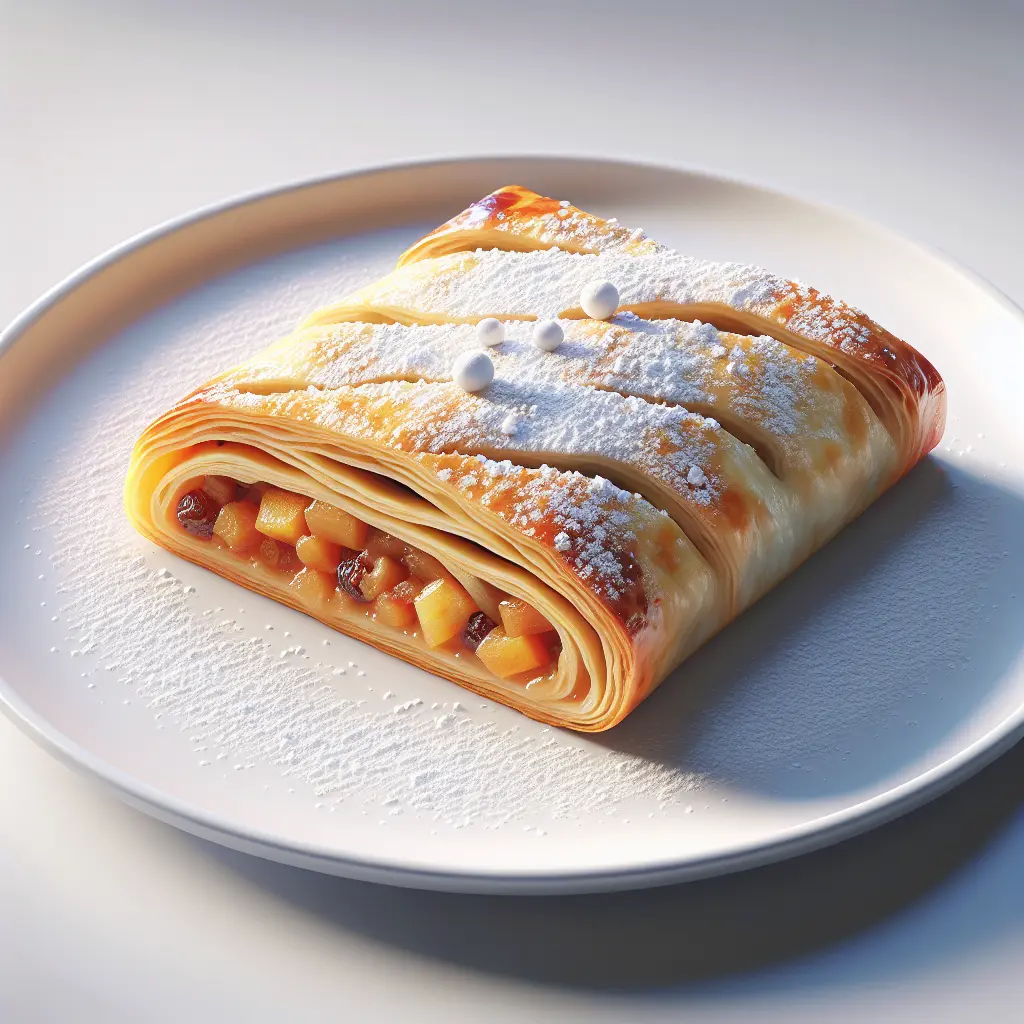Strudel: A Culinary Journey to Delight
Introduction: Strudel, a traditional Austrian pastry, is a culinary masterpiece that has gained worldwide recognition for its exquisite taste and intricate preparation. Its name, derived from the German word 'strudel,' meaning 'whirlpool,' aptly describes the pastry's characteristic swirling appearance.
Origins and History: The origins of strudel can be traced back to the Austro-Hungarian Empire, where it became a popular delicacy in the 18th century. Its popularity spread throughout Europe and beyond, captivating palates with its unique blend of flavors and textures. Today, strudel remains a beloved pastry, enjoyed in homes, cafes, and restaurants around the globe.
Types of Strudel: Strudel comes in a diverse range of flavors, each offering a distinct culinary experience:
- Apfelstrudel (Apple Strudel): The most well-known and beloved type, filled with sweet, caramelized apples, cinnamon, and raisins.
- Topfenstrudel (Cheese Strudel): A savory variation filled with a creamy mixture of quark cheese, herbs, and sometimes potatoes.
- Mohnstrudel (Poppy Seed Strudel): A sweet strudel filled with a nutty and aromatic poppy seed filling.
- Nussstrudel (Nut Strudel): A decadent strudel filled with a mixture of walnuts, hazelnuts, and other nuts.
- Millirahmstrudel (Sweet Cream Strudel): A unique and indulgent strudel filled with a creamy custard or whipped cream.
Preparation and Ingredients: Strudel making is an art form that requires patience and precision. The dough is carefully stretched and rolled into a thin, paper-like sheet. The filling is then spread evenly over the dough, which is then rolled up into a cylinder and baked to perfection. Traditional strudel dough is made from a simple combination of flour, water, and salt, while the fillings vary depending on the type of strudel being made.
Nutritional Value and Health Benefits: A single piece of strudel typically contains around 350 calories and is a good source of carbohydrates, protein, and fiber. The filling provides additional nutrients, such as vitamins, minerals, and antioxidants. While strudel should be enjoyed in moderation due to its high calorie and sugar content, it can be a part of a balanced diet when consumed as an occasional treat.
Conclusion: Strudel is a culinary masterpiece that embodies the rich culinary traditions of Austria. Its crispy, flaky exterior, sweet and tangy fillings, and intricate preparation have made it a beloved pastry around the world. Whether enjoyed as a warm dessert or a savory snack, strudel is a testament to the art of baking and a delight for taste buds of all ages.
How many calories are in Strudel?
Each 1 Piece of Strudel contains 350 calories.
Strudel Nutritional Information
| Nutrient | Amount per 1 Piece (154g) |
|---|---|
| Calories | 350 Calories |
| Protein | 3.8g |
| Fat | 15g |
| Saturated Fat | 8.1g |
| Cholesterol | 0.033mg |
| Carbohydrates | 49g |
| Dietary Fiber | 2.8g |
| Sugar | 23g |
| Sodium | 0.199mg |
| Potassium | 0.1613mg |
| Calcium | 0.03mg |
| Iron | 0.0016mg |
